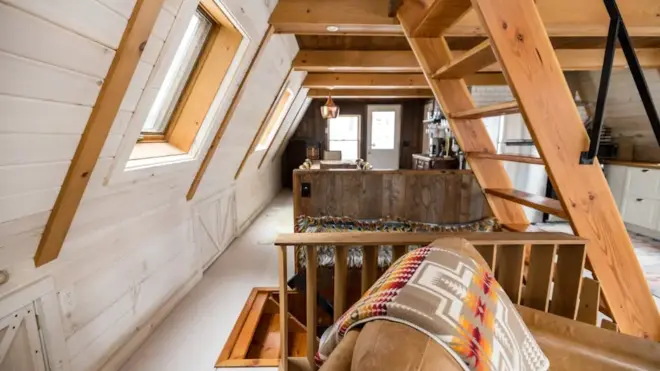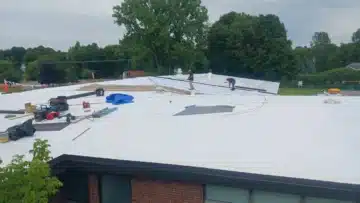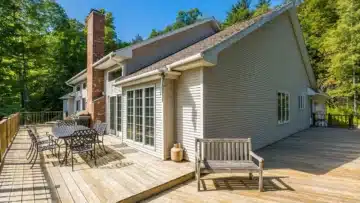Vermont’s unique climate and natural landscape pose specific challenges for roofing systems. Understanding these issues can help homeowners protect their investment. Let’s explore the most common Vermont roofing challenges and effective solutions.
Challenge 1: Heavy Snow Accumulation
Vermont winters are known for their heavy snowfall, which can lead to significant snow accumulation on roofs. This excess weight can strain roofing systems, making it essential for homeowners to understand how to manage snow load effectively.
It’s crucial to implement proper roof design that accommodates the potential for heavy snowfall. Roof slopes should be steep enough to allow snow to slide off rather than accumulate. Regular snow removal, especially from flat roofs, is a proactive measure that can prevent structural damage or collapse.
Investing in a snow retention system can also minimize risks. These systems work to hold snow in place, preventing sudden slides that could harm people below or damage property.
Challenge 2: Ice Dams
Ice dams are a frequent concern for Vermont homeowners, often forming when warm air from the house melts snow on the roof, which then refreezes at the eaves. This scenario can lead to water backup beneath shingles, causing leaks and structural damage.
To combat ice dams, focus on enhancing insulation in your attic. Proper ventilation ensures that cold air reaches the roof, preventing the melting and refreezing cycle. Make sure to repair any air leaks that might cause the attic to warm up excessively.
Additionally, installing heated cables along the roof’s edge can provide a more immediate solution, melting snow and ice reliably to avert dam formation.
Challenge 3: Extreme Temperature Fluctuations
Vermont experiences dramatic temperature shifts between seasons, impacting roofing materials significantly. It’s vital to select roofing options designed to withstand this stress, such as high-quality asphalt shingles or metal roofing that can expand and contract without damage.
Understanding the thermal dynamics of your roofing system is also important. The greater the temperature variation, the more vital it is to ensure materials can handle these changes without cracking or warping.
Investing in roofing materials with a solid warranty can provide peace of mind against potential wear caused by extreme temperatures. Consulting with local roofing experts can guide homeowners in making the right choice.
Challenge 4: High Wind Events
Vermont can experience high winds, especially during storm seasons. Properly securing your roof is essential to prevent damage from wind uplift, which can lead to torn shingles or even complete roof failure.
When replacing or installing a new roof, consider wind-resistant options. Materials such as architectural shingles or metal roofing provide superior protection against high winds.
It’s also beneficial to regularly inspect and maintain your roof’s integrity. Trim overhanging branches that could fall during a storm and ensure gutters and downspouts are clear to allow water to flow freely.
Challenge 5: Moisture and Humidity
Moisture issues can plague Vermont roofs, leading to mildew, mold, and wood rot. Effective management of humidity levels within a home is crucial to protect roofing systems from these potential hazards.
Proper ventilation is the first line of defense against moisture buildup. Attic vents and ridge vents should be installed correctly to allow airflow, expelling humid air and preventing condensation in colder months.
Waterproofing your roofing materials is equally important. Products such as synthetic underlayment can add an extra layer of protection against leaks and moisture intrusion.
Final Thoughts on Vermont Roofing
By staying informed about Vermont roofing challenges and being proactive with maintenance and repairs, homeowners can ensure their roofs remain strong and effective against the elements. Regular inspections and choosing appropriate materials are key strategies.



